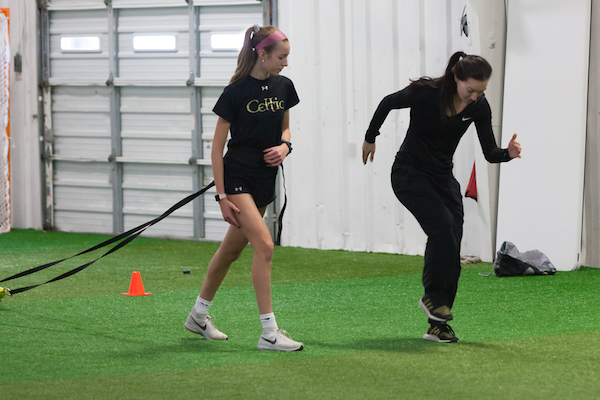
12 May Why Kids Need Strength and Conditioning More Than Ever Before
Ask a group of youth athletes to show you how to make an Instagram story, and everyone volunteers with eagerness.
Ask a group of youth athletes to explain the strategies of Fortnite, and everyone lights up with excitement.
Ask a group of youth athletes to perform a cartwheel, and everyone cracks under pressure.
Ask a group of youth athletes to balance on one foot for all but five seconds, and everyone stumbles.
Sadly, this is the reality of the world today: glowing, stagnant screens have replaced flowing, carefree bodies to the point that everyone is forgetting how to move.
Things like balancing, cartwheeling, squatting, crawling, hand-standing, climbing, and hopping have become a difficult pursuit, instead of an innate pattern.
And now that kids are born with an iPhone in-hand, they’d rather spend their days perusing their Instagram feed, or finding that perfect SnapChat filter, or participating in drama-filled group chats.
Cell phones are ruining everything.

A 5-inch screen has replaced physical activity so much that obesity rates in kids are at an apex.
Mind you, adults are to blame here, too, which is why I’m writing this piece – to urge adults, coaches, and role models in sport to take action and inspire a love for movement in youth athletes.
And not just any movement. A variety of movement.
This is why youth strength and conditioning is more paramount than ever before. The role of the strength coach is to expose kids to the basic motor skills they aren’t getting enough of in team practices and skills sessions. Adding on, the strength coach is the catalyst for instilling in kids the fulfilling habit of physical activity that extends far beyond a sports career.
Before I dive in, I’m having a friend join me for this ride. Coach Reed Maltbie is a pioneer in youth development, specifically at the grassroots level. He is a mentor, writer and speaker and helps to develop coaches across the world to better service their players.
He’s so much of a legend, the pressure is on for me to make my portion face melting worthy.
Well, here goes nothing…
1. Strength and conditioning teaches children basic motor skills.
Just like learning sport specific skills, like shooting, passing, and throwing, the basic motor skills like balancing, crawling, climbing, jumping, landing, galloping, and sprinting are just as important.
Look: I’m also a skills coach and will be the first to champion repetition with the soccer ball. But in order to optimize skill specific movements, we have to master basic motor skills, get coordinated, and build strength.
The moment a kid is balanced and coordinated is the moment their ball skills improve. Motor skill learning is magical, folks.
Here are some drills to try:
Crawling
Rolling
Jumping and Balancing
Climbing and Gripping
We need to be self aware as coaches and ask ourselves: are our kids getting too much ball work and not enough basic motor skill work?
Can we have a nice blend of both?
2. Improves performance and reduces chance of overuse injuries.
Too often, I have youth athletes coming to me after years of team practices and skills sessions, with no real strength and conditioning, and they have a laundry list of previous overuse injuries:
– Sever’s Disease
– Stress fractures
– IT band syndrome
– Patellofemoral pain
– Achilles tendinitis
– Hip avulsion fractures
Sometimes, I wonder if these kids are living in 70-year-old’s bodies.
But no.
They just have done no strength training to bulletproof themselves from the rigor of their sports schedules.
Again, it’s devastating how little of a priority youth strength and conditioning is in the player development world.
And truthfully, I can’t think of one reason why getting strong is bad. Especially when we look long term, kids continue to become stronger, faster, and more resilient for a lifetime.
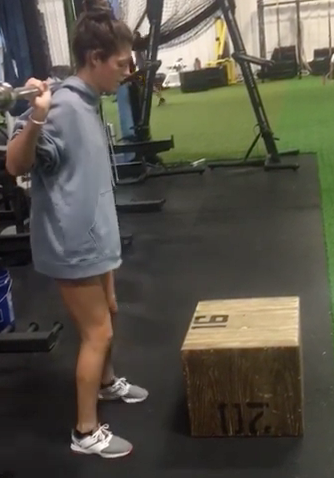
Only throwing skill work at kids is tantamount to handing a child a meager, few Lego blocks and telling them to build something sturdy.
How about we provide them with as many Legos as possible so they can construct all facets of their athleticism and reduce chance of overuse injury?
Expounding further, I can’t name one parent that uttered to me, “Erica, we really regret getting our kids strong.”
HAHAHAHA. That’s adorable.
Read more on amazing things strength training can do for you here as well as why your child does not need that much skills training.
Getting strong breathes into our sports as well as personal lives. It empowers us to take on adversity with courage, and to rise up to unimaginable heights.
To augment further, some of the best compliments us strength coaches have gotten from parents are how confident their kids are stepping on the pitch, how much better they’re able to withstand forces in the game, and how much better they’re able to handle stress. <— Reed will go into more on the mental piece at the end of this article.
3. Allows them to escape the grind of team practices.
This much I know: the gym is the best way for kids to not only be exposed to new movement, but to make new friends, be autonomous, and find their strength.
Too, it’s worth mentioning that the gym doesn’t have the added bs of playing time, the stress of college recruiting, or the pressure from parents on the sidelines.

There have been times we’ve gotten stronger, worked our tails off, all while having fun and no parents in sight.
Funny enough, we don’t allow parents to stay in our facility to watch workouts, and some are livid with this rule.
Well, you know what, Bunky?
I. Don’t. Care.
For one, it’s awkward for the child and the rest of the staff. Two, it’s a liability with clanking, banging dumbbells and barbells. And three, would a parent want their child staring at them while they did squats?
Yea, I think not.
So this bears repeating: the gym is truly an escape for kids to be independent, escape obligations of school and family, experience new challenges, and be free.
There have been times youth athletes schooled me during reactive agility drills:
There have been times kids have made new friends and lacrosse bros helped soccer girls with core work:
There have been times a college girl beat my Chin-Up max:
There have been times kids set up their own obstacle course and spiked their heart rates in a fun way:
Strength and conditioning is critically important in today’s day and age. For the reasons of human movement, fun, resilience, and strength, it would be a mistake to not weave it into your child’s life.
Take it from a woman who started strength and conditioning with her coach at 12-years-old, did it for the rest of her soccer career, and now is 29-years-old and stronger than ever before.
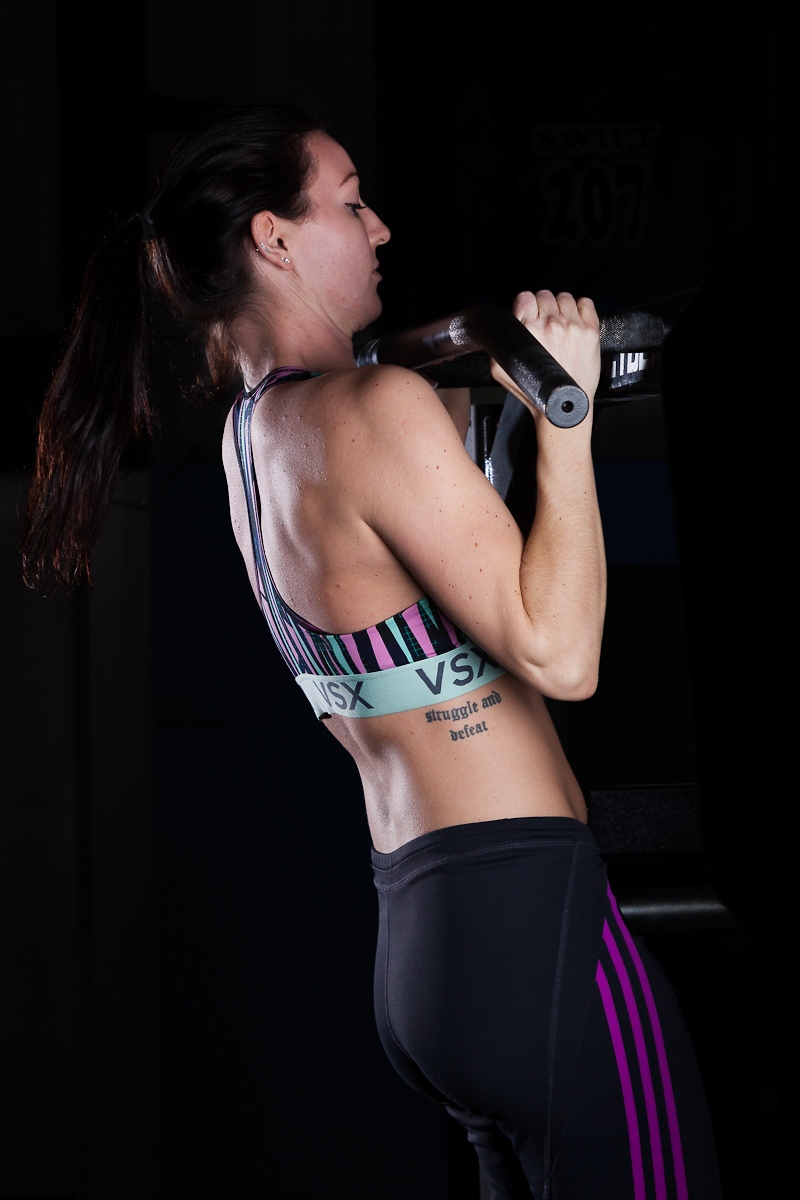
And take it from a woman who has female athletes who are done with their sports careers, and are still coming to the gym train.
Movement, for them, is not a sport performance pursuit, but now, a lifetime habit.
I’d go even as far as to say, they’re lifetime athletes.
Full disclosure: this type of impact brings tears to my eyes. In a world that distracts us from physical activity, I’m forever grateful to be able to continue to inspire kids to move. That’s why I’m here.
Alright, alright, before I get emotional and sprinkle my keyboard with my tears, I’ll hand over the article to Reed.
Listen intently.
Enjoy.
Ask a group of athletes to solve an issue with your phone, and everyone rolls up their sleeves to help.
Ask a group of youth athletes about losing in Fortnite, and everyone happily points out, “it’s no big deal, you just try again”.
Ask a group of youth athletes to solve a sports issue, and everyone freezes, waiting for an adult to show the answer.
Ask a group of youth athletes to “recover” from failure in a game, and everyone cracks under the pressure.
This is the reality of youth sports today: blank, helpless stares have replaced the focused, adaptable brains to the point where our mentally paralyzed children are all being labeled “uncoachable, unreachable, soft”.
And now, more kids than ever are struggling to manage the emotional and psychological components of youth sports that are so vital for building stronger brains.

The necessary mental strength and conditioning (credit to Dr. Mara Smith for the term) children need to thrive in life are missing from the youth sports recipe, and it has left us with alarming rates of mental health issues and a slew of young athletes who can barely survive. The response is to blame the “kids these days”. What role are we playing in this?
Like an unprepared knee joint under a harsh workload, we are crushing our children’s brains if we don’t prepare them to manage the pressure. With no training, kids simply cannot withstand the mental stress we relentlessly pile on their still developing brains.

The human brain develops well into our twenties, and that means it is still in need of “training”. If we would not subject a child to the absurd bench press weight of a 35-year-old pro, why would we ever subject them to the absurd mental load of an adult pro’s sporting environment?
The brain needs basic mental skills, functional stress management training that reduces anxiety, and slows the release of damaging stress hormones. Mental, emotional, or psychological stress is just as hard on the body as physical. The waves of stress hormones released when our amygdala is activated during high anxiety or fear-filled moments can lead to weakened joints as much as the repetitive incorrect movement patterns can. The inability for a child to cope, to recover, or to move on from a failure can lead to burnout.
As Erica referenced above, Dean Krielaars compares physical literacy to “lego blocks”. The more physically literate they become the better they can build a solid sporting foundation. A child who is properly trained in a comprehensive strength and conditioning program inclusive of functional movement has the strong foundation to sport better and sport longer. So instead of giving kids a few pieces, give them a full bucket.

This allows kids to build a strong foundation to excel in their sport, and to survive and thrive through the trials and tribulations of life.
To mirror Erica’s points, here is how you can employ mental strength and conditioning into your coaching arsenal:
1. Mental S&C teaches basic competition mental skills.
Kids compete. Even if we don’t keep score, they know. They know when they mess up, who the weak and strong are, and where they stand in comparison to their peers. Our addiction to results and comparisons means we only coach the things that get us there, and we pay no attention to the things that keep us strong along the journey. You can’t decorate the master suite before you pour the concrete foundation.
It’s not about what we get when we arrive, it’s who we become along the way, and trust me, kids are being shaped by the journey whether we know it or not. The more we ignore the actual competition for the confetti, the less legos we put in that bucket. Kids compete. Competition influences them. We can control how it influences. We must teach them HOW to compete.
How do they handle failure? What kind of grace do they show in a win? Do they have game faces or reframing techniques? Including mental strength and conditioning ensures they learn these vital components and how to properly use them.
Not knowing proper form or technique during heavy lifting can lead to irreparable damage. Not knowing the basic mental skills can definitely do irreparable damage too. What we don’t know and don’t include in our training can be very dangerous.
Incorporate values into your training. A session theme should be coupled with a value word. Design your practice with the technical/tactical AND emotional objectives. Reinforce mental skills in your “drills” too. When a child turns a core value into a core behavior encourage that publicly. This reinforces powerful behaviors for the entire team.
Model mental skills. Control your behaviors. Shake off a bad call. Count to ten (visibly) when angered, be honest and vulnerable. Telling athletes it is okay to have emotions and modeling methods for managing them is paramount.
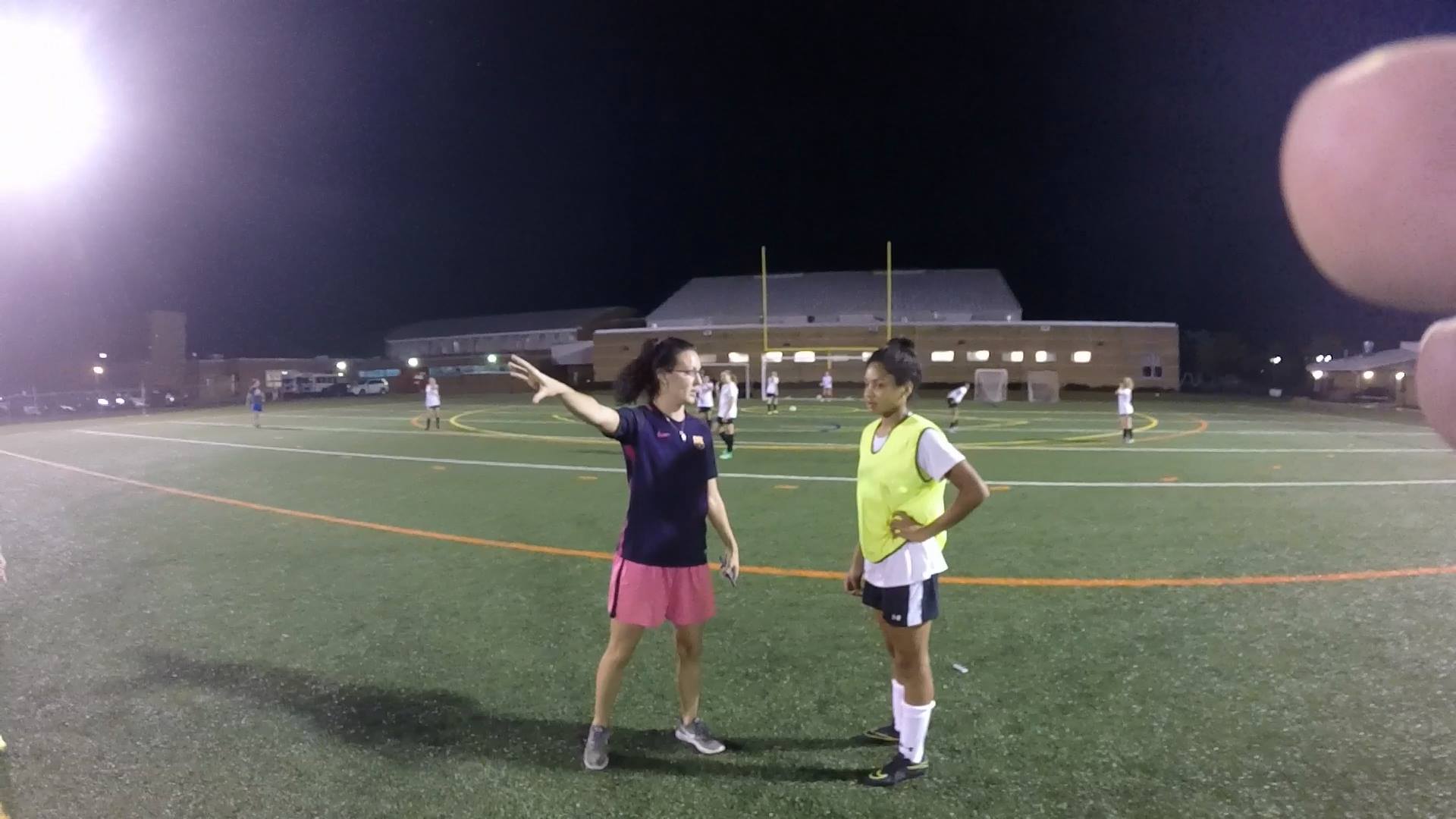
What would it look like if your athletes had competition mental skills for every kind of setback, triumph, and challenge?
2. Vastly improves “peak” performance and reduces the chance of stress.
Have you ever had your “faster, more powerful” computer fail because of a virus? All that high-end hardware shut down by software.
We assume when kids choke under pressure they didn’t train enough. We double the amount of practices the following week. What good will that do?
I can add more physical memory to my computer, but that’s not making the virus go away.
Sometimes failure to perform is not a physical problem. The hardware can only perform as well as the software that runs it.
Work on the athlete’s “voice” (software). What are kids saying to themselves during competition? If we are ultra-intentional with knowing their voice and the ways we positively and negatively contribute to it, we can help give them virus free software. Why not ensure we write good code on our kids’ brains?
Kids with strong mental skills perform better and longer. We exacerbate their stress when we only focus on outcomes. Stop putting pressure on them to perform and teach them HOW to handle the pressure.
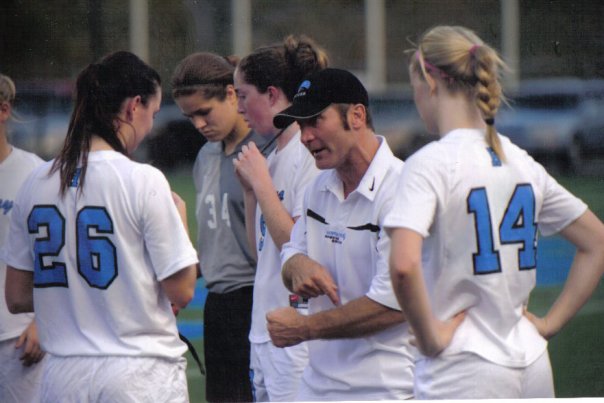
Focus on mastery of skills. Encourage effort. Celebrate challenge. If they get amped about the challenge of learning, they are less likely to get burned out by the pressure of underperforming, and they will underperform if we continue to measure them by arbitrary adult standards.
Measure each athlete by his or her own standards of excellence and not yours or another athlete’s. Celebrate a daily chase for that excellence and not just the occasional achievements.
High fives, thumbs up, asking more questions, coming alongside them because they are “so close and working so hard and we’ll solve this together” gives them the mental tools to withstand the stress so much better than benching them or demeaning them.
It is our choice to build or belittle. Choosing podiums over process or criticism over connection deprives them of the building blocks they need to survive the game. Choosing not to include basic mental skills in our coaching regimen robs them of the building blocks needed to thrive in the greater game of life.
Further Reading on Strength and Conditioning for Kids
Further Reading on Mental Strength and Conditioning for Kids
Brain Gym: Simple Activities for Whole Brain Learning
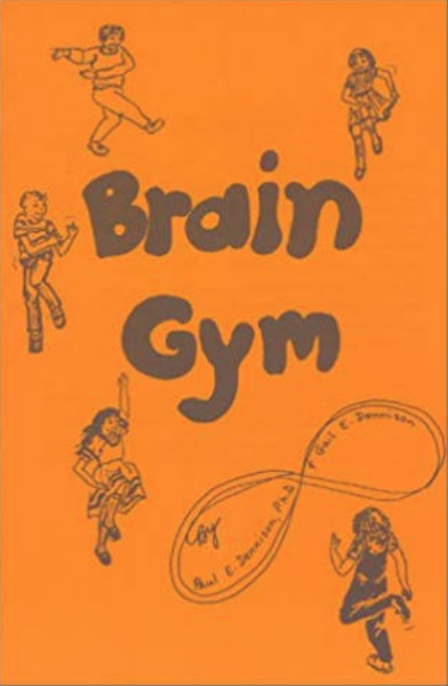
The Brain that Changes Itself: Stories of Triumph from the Frontiers of Brain Science
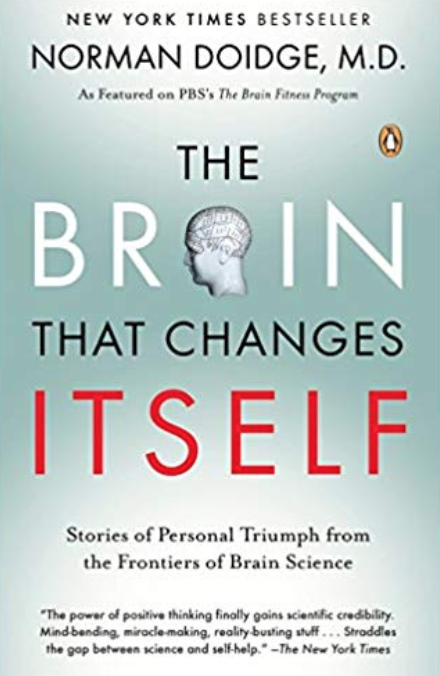
Soft-Wired: How the New Science of Brain Plasticity Can Change Your Life

Leadershift: The 11 Essential Changes Every Leader Must Embrace
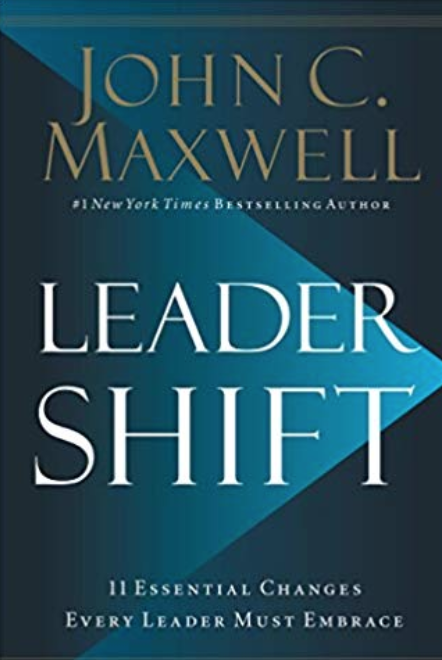


Shane
Posted at 01:24h, 14 MayThis article is gold, Great work coaches.
erica
Posted at 02:41h, 14 MayThank you!
PJ Gardner
Posted at 01:47h, 16 MayGreat reminders why it works! Stay active to be better!
erica
Posted at 10:29h, 16 MayYES! The amount of brain power you get from it, is tremendous!